Klipsch Bar 48 Review
Klipsch Bar 48 Review
Can horn-loaded tweeters make up for a lack of features?
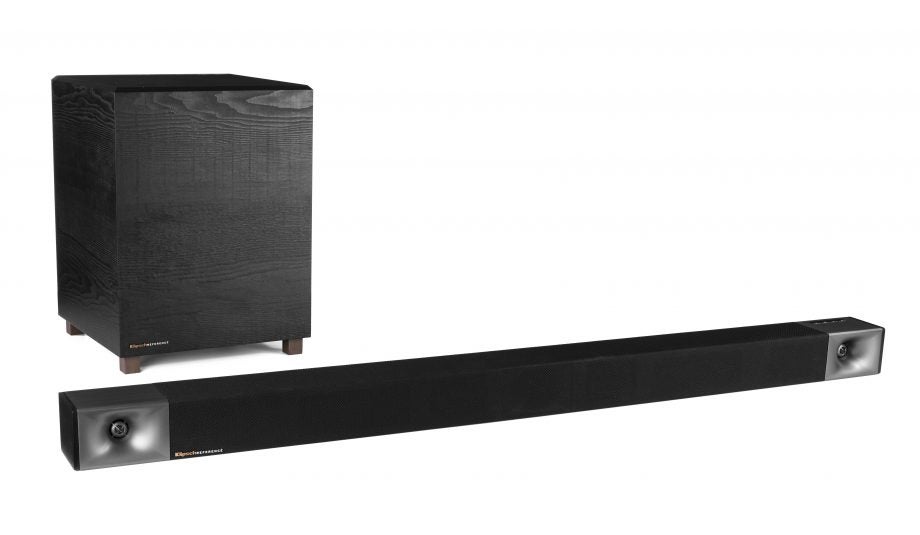
Verdict
This 3.1-channel bar and bass combo isn’t cheap, and won’t be for everyone, but its horn-loaded speakers deliver the sonic goods.
Pros
- Impressive sonic performance
- Well-integrated subwoofer
- Incredibly easy to setup
- Optional surround speakers
Cons
- Horn tweeters won't be for everyone
- Limited set of features
- Expensive for what you get
Key Specifications
- Review Price: £565
- 3.1ch audio
- Dolby Digital and DTS 5.1
- Dimensions: 121.1 x 7.3 x 8.6cm
- Built-in Bluetooth
- 1 x HDMI-ARC, 1 x optical, 1 x 3.5mm analogue, 1 x USB
What is the Klipsch Bar 48?
The Klipsch Bar 48 is the latest 3.1-channel soundbar and subwoofer combination from the legendary US audio manufacturer.
Klipsch has been making speakers for so long that it goes back to the days when amplification had very little power, and drivers needed to be incredibly sensitive. This explains the reason the company originally opted for horn-loaded tweeters, a design feature it continues to use to this day.
The Bar 48 uses three horn-loaded tweeters, two of which are proudly on display. However, aside from that, this soundbar is somewhat light on features. There’s a backlit remote control, but only a single HDMI-ARC connection, and no support for object-based or even lossless audio.
In addition this soundbar isn’t cheap, so the Klipsch will need to deliver the sonic goods if it wants to hold its own against better-specified competition.
Related: Best soundbars
Klipsch Bar 48 design and control – Horn-loaded tweeter design may divide opinions
The design of the Klipsch Bar 48 won’t be for everyone, with a pair of horn-loaded tweeters prominently on display at either end of the soundbar. Some will undoubtedly feel the look is a classic; others will find it old-fashioned. It’s obviously a matter of personal taste, but if horn tweeters aren’t for you then you should know that there are no removable grilles to cover them.
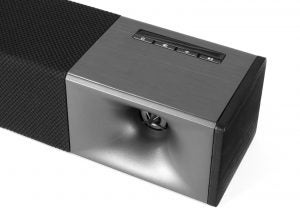
Horn tweeters aside, the Bar 48 is unlikely to win any beauty contests with its simple wooden chassis and wrap-around black fabric grille. However, the wooden construction offers an acoustic advantage over the competition, most of whom use plastic materials at this price. The soundbar’s width will suit TVs with screen sizes over 55in, and its height shouldn’t block the screen.
There are some nice design flourishes, with the visible horn-loaded tweeters finished in an attractive dark silver. Another novel feature is the option to swap out the end caps, allowing you to better match the soundbar to your decor. The limited display is composed of some LED indicator lights and, at the top on the far right you’ll find basic controls for power, volume, and input.
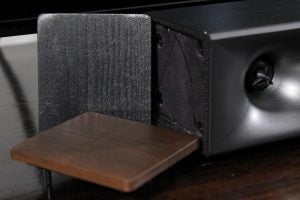
This is a 3.1-channel system so the Bar 48 comes with a wireless active subwoofer that’s also made of wood, is finished in black, and has a similar level of build quality to the soundbar itself. There’s a large 8in downward-firing driver with a bass port, and the bar and sub should pair automatically when you first turn them on.
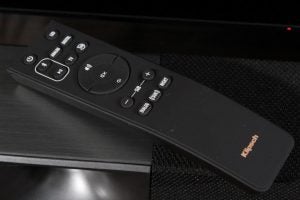
The Bar 48 comes with a full-sized remote control, which makes a nice change, and it even has a backlight for use in the dark. The zapper offers all the buttons you’ll need to effectively operate the soundbar, with keys for power, volume and the various inputs. There are also buttons for muting the audio, turning off the indicator lights, adjusting the sub level, and selecting the Dialogue, Surround and Night modes.
Related: Best soundbar deals
Klipsch Bar 48 features and connectivity – Rather basic in terms of features
The Klipsch Bar 48 is designed to simply and effectively upgrade the built-in audio of your TV. For this reason the company has concentrated on a high-quality 3.1-channel design, rather than a host of features. The front three channels are each composed of a Tractrix horn-loaded 1in soft dome tweeter, and two 3in oval fibre composite cone woofers.
The inclusion of a dedicated centre channel ensures dialogue remains clear and focused on the screen, while the mid-bass drivers and tweeters provide a solid frequency response. The bass is produced by the subwoofer, which crosses over seamlessly with the soundbar. All the drivers are separately amplified, and the system as a whole has 440W of power.
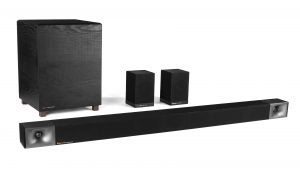
The Bar 48 decodes lossy Dolby Digital and DTS formats up to 5.1 channels, but is obviously restricted to 3.1 channels out of the box. If you want to run a full 5.1-channel system, Klipsch offers the the optional Surround 3 rear speakers that cost $249/£265 and connect using a dedicated USB wireless transmitter.
It’s surprising that the Bar 48 doesn’t support lossless Dolby TrueHD or DTS-HD MA decoding, and at this price you’d expect immersive audio support (Dolby Atmos and DTS:X), not to mention Wi-Fi, smart features, and multi-room functionality. However, there are three sound modes, and Klipsch plans to add DTS Virtual:X via a USB firmware update.
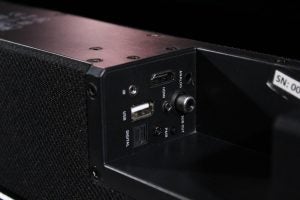
All the connections are located in a recessed area at the rear of the soundbar, and comprise of a single HDMI-ARC port, an optical digital audio input, and a 3.5mm analogue input. There’s also a USB port for firmware updates, a connector for an IR extender, Bluetooth, and a subwoofer output that allows you to upgrade the wireless sub with a wired one, or even run dual subs.
Related: What is Dolby Atmos?
Klipsch Bar 48 performance – A wide and expansive soundstage
Thanks to its plug-and-play nature, the Klipsch Bar 48 is incredibly easy to set up. You simply place the soundbar under your TV, either on a stand or mounted on the wall – depending on your system.
For the best bass response you should place the subwoofer at the front of the room, either to the left or right of the soundbar (whichever is convenient). The sub should pair with the bar automatically.
Next, connect the soundbar to your TV using HDMI-ARC, and then connect all your other HDMI sources to the TV as well. You can then send the audio from the TV, and anything connected to it, back to the soundbar via ARC. This approach also allows you to control the volume of the soundbar using your TV remote thanks to the wonders of CEC.
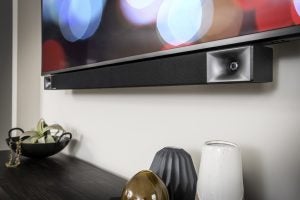
If your TV doesn’t support ARC, then you’ll need to use the optical digital connection. This connection can also be used for audio-only sources, along with the 3.5mm analogue input and Bluetooth. Once all that has been done, you’re good to go.
There’s no doubt that Klipsch’s focus on sound quality has paid dividends when it comes to the Bar 48, with a wide and expansive front soundstage that delivers exceptional detail, thanks primarily to the greater sensitivity of the horn tweeters. The higher frequencies are well defined, the mid-range has depth and clarity, and the subwoofer adds a solid foundation of bass.
The system also has plenty of power, resulting in a dynamic and engaging performance that can easily fill a medium-sized room. The soundbar works extremely well with music, rendering excellent stereo imaging and precise placement of instruments. The sub is also nicely integrated, crossing over smoothly with the bar and giving drums a tight percussive kick.

This impressive sonic rendition extends to TV shows as well, with the addition of a dedicated centre speaker ensuring clear and focused dialogue.
Whether it’s a newsreader, a Masterchef voice over, or the commentary on the latest Premiership football match, the centre channel retains excellent clarity. The Bar 48’s generous soundstage also spreads the music across the front of the room, and places effects on either side of the screen.
Watching Shazam on Blu-ray reveals the soundbar’s ability to reproduce an engaging multi-channel experience, even though the audio is limited to 3.1 channels. The sub’s powerful bass gives the film’s super-heroics greater impact, and the lightning effects zap across the front wall.
The Surround mode adds a degree of depth to the comic book sonics, but if you want to fully reproduce a 5.1 mix, you’ll need to invest in Klipsch’s wireless surround speakers.
Related: Best surround sound systems
Should you buy the Klipsch Bar 48?
The Klipsch Bar 48 is a solidly made and sonically impressive soundbar from a manufacturer that knows how to build a speaker. The three front channels benefit from horn-loaded tweeters, while the hefty 8in subwoofer ensures plenty of low-end grunt. The soundstage is detailed, with clear dialogue and some well-placed effects. Whether you’re listening to music, watching your favourite TV show, or catching the latest blockbuster, the Bar 48 is sure to please.
Klipsch has clearly prioritised sound quality over features, so the Bar 48 is somewhat lacking in terms of the latter. There are no HDMI inputs, no Wi-Fi, and no smart features, plus the decoding is limited to lossy formats. Klipsch does at least plan to add DTS Virtual:X via a firmware update, but the Bar 48 will struggle to compete with models from the competition, many of which support Dolby Atmos and DTS :X immersive audio at this price.
A good example is the Sony HT-ZF9, which costs about the same as the Klipsch Bar 48 and uses the same 3.1-channel layout. However, thanks to the application of psychoacoustic wizardry, the HT-ZF9 also supports Dolby Atmos and DTS:X. Throw in two HDMI inputs, Wi-Fi, Chromecast and the ability to work with smart assistants, and you realise what you can get for the same price.
The Sony delivers immersive audio through acoustic trickery, but if you can stretch your budget further then the Samsung HW-Q70R supports Dolby Atmos and DTS:X properly with a 3.1.2 system that uses upward-firing drivers. It has only one HDMI input, but does manage to pass Dolby Vision and HDR10+. It also has Wi-Fi, works with Amazon Alexa, and supports multi-room functionality.


